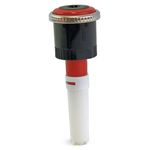Happy Monday GPODers!
First, I want to thank everyone for their feedback on my experimental post on Friday. Overall, I got the sense that we most enjoy hearing more from the contributors themselves, and so do I! I always try my best to work with whatever someone wants to contribute, whether that’s paragraphs of information or just one photo, and I really appreciate the positive feedback I have gotten on my commentary. However, I can never describe a garden or bring it to life like the person who created it and tends it. I’m still happy to accept whatever someone would like to share, but just a note to future contributors—don’t be afraid to talk about your garden! We all love hearing your stories and experiences.
As today’s submission exemplifies, your stories and experiences are both unique and understood by fellow gardeners. Sallie Boge has submitted her garden a couple of times in the past (check out those submissions: Gardening for the Hungry and Sallie’s Pandemic Garden Project), but today she’s sharing a special garden experience she had thanks to a friend:
My friend, Terri has a night-blooming cereus (Epiphyllum oxypetalum, Zones 9–10). Cereus, a member of the cactus family, is a house plant in our Chicago area Zone 6a, but Terri brings it out into the garden for the season. A cereus flower blooms for one night only and then dies. I was able to check off another item on my botanical “bucket list” by witnessing it bloom recently. The photos below were taken outdoors at around 9:00 p.m.
 A flower certainly worth the wait! I have not had the opportunity to see one of these botanical wonders in person, but they’re known to have an incredible, sweet fragrance. From stories I’ve seen from others with this plant, the scent is sometimes the only indicator that the plant has bloomed and is what draws them in to check it out. Epiphyllum oxypetalum can produce a flower one night a year, but someone can own this plant for years before they catch one of these elusive blooms.
A flower certainly worth the wait! I have not had the opportunity to see one of these botanical wonders in person, but they’re known to have an incredible, sweet fragrance. From stories I’ve seen from others with this plant, the scent is sometimes the only indicator that the plant has bloomed and is what draws them in to check it out. Epiphyllum oxypetalum can produce a flower one night a year, but someone can own this plant for years before they catch one of these elusive blooms.
 An even closer look allows us to see even more detail in the pure white flowers that are often as large as a dinner plate. Plants in the Epiphyllum genus are often called “orchid cacti” because, as Sallie mentions, they are part of the cacti family but have many orchid-like characteristics. For Epiphyllum oxypetalum that includes very particular conditions to bloom, which is why seeing one of these flowers outside of their natural growing habitat is such a rare occurrence.
An even closer look allows us to see even more detail in the pure white flowers that are often as large as a dinner plate. Plants in the Epiphyllum genus are often called “orchid cacti” because, as Sallie mentions, they are part of the cacti family but have many orchid-like characteristics. For Epiphyllum oxypetalum that includes very particular conditions to bloom, which is why seeing one of these flowers outside of their natural growing habitat is such a rare occurrence.
So when you have a garden friend as great as Sallie has found in Terri, you have a late-night cup of coffee and jump at the opportunity to see one of these botanical wonders.
Thank you for sharing this incredible garden experience with us, Sallie! The only thing better than enjoying beautiful plants is having great friends and family to share them with.
Has anyone else had a once-in-a-lifetime garden experience with or thanks to a friend? Let us know in the comments, or send in your own story to be featured by following the directions below.
Have a garden you’d like to share?
Have photos to share? We’d love to see your garden, a particular collection of plants you love, or a wonderful garden you had the chance to visit!
To submit, send 5-10 photos to [email protected] along with some information about the plants in the pictures and where you took the photos. We’d love to hear where you are located, how long you’ve been gardening, successes you are proud of, failures you learned from, hopes for the future, favorite plants, or funny stories from your garden.
Have a mobile phone? Tag your photos on Facebook, Instagram or Twitter with #FineGardening!
Do you receive the GPOD by email yet? Sign up here.
Fine Gardening Recommended Products

Gilmour 811673-1001 Sprinkler
– 43-ft. spray distance (up to 5, 800 sq. ft. coverage)
– Adjustable collar for partial- to full-circle coverage
– Dial precisely sets spray distance
– On/off switch eliminates trips from sprinkler to spigot

Hunter Industries MP-1000-90 Hunter Nozzle
– 8′ to 15′ radius with an adjustable arc of 90° to 210°, radius can be reduced by up to 25% to fit landscape needs
– Double-pop technology flushes the nozzle during start-up and shutdown to prevent clogging
– Wind-resistant, multi-directional streams provide even coverage

XLUX Soil Moisture Meter
– Large and clear dial, including ten scales, plug and read
– Simply insert the moisture meter into soil and you’ll get the test result instantly
– Single probe, less hurts to the roots, doesn’t dig up too much soil after test

